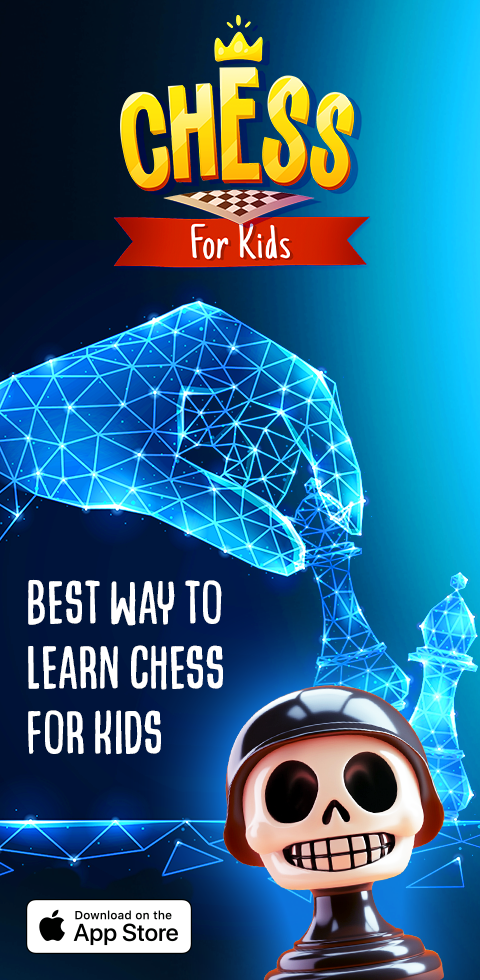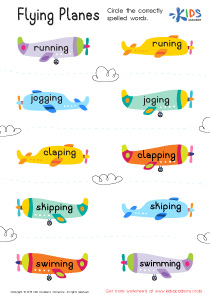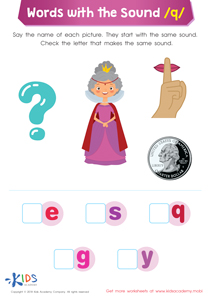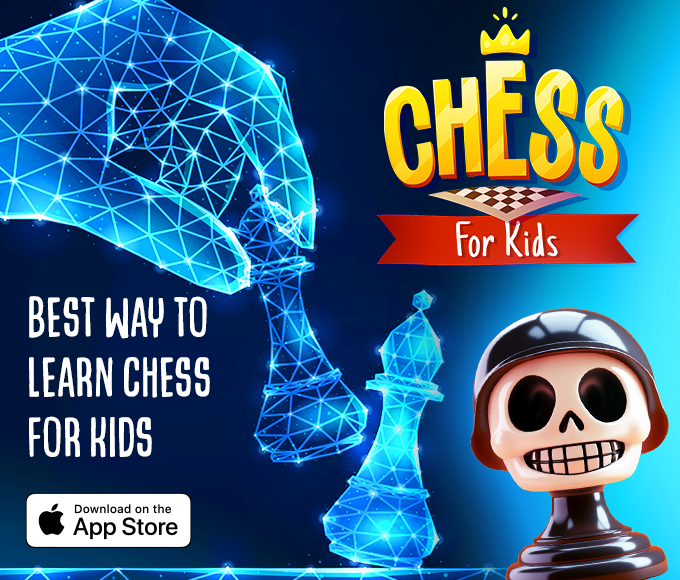Consonant Digraphs Worksheets for Ages 6-8
13 filtered results
-
From - To
Explore our engaging Consonant Digraphs Worksheets designed specifically for children ages 6-8! These fun and interactive resources help young learners master the unique sounds made by combining consonants like 'ch,' 'sh,' and 'th.' Our carefully crafted activities improve phonemic awareness, enhancing reading and writing skills. From matching exercises to coloring pages, these worksheets cater to various learning styles, ensuring every child enjoys the process. Parents and teachers will appreciate how our materials support literacy development in a playful environment. Discover the joy of learning with our Consonant Digraphs Worksheets today and watch your child's confidence and skills flourish!
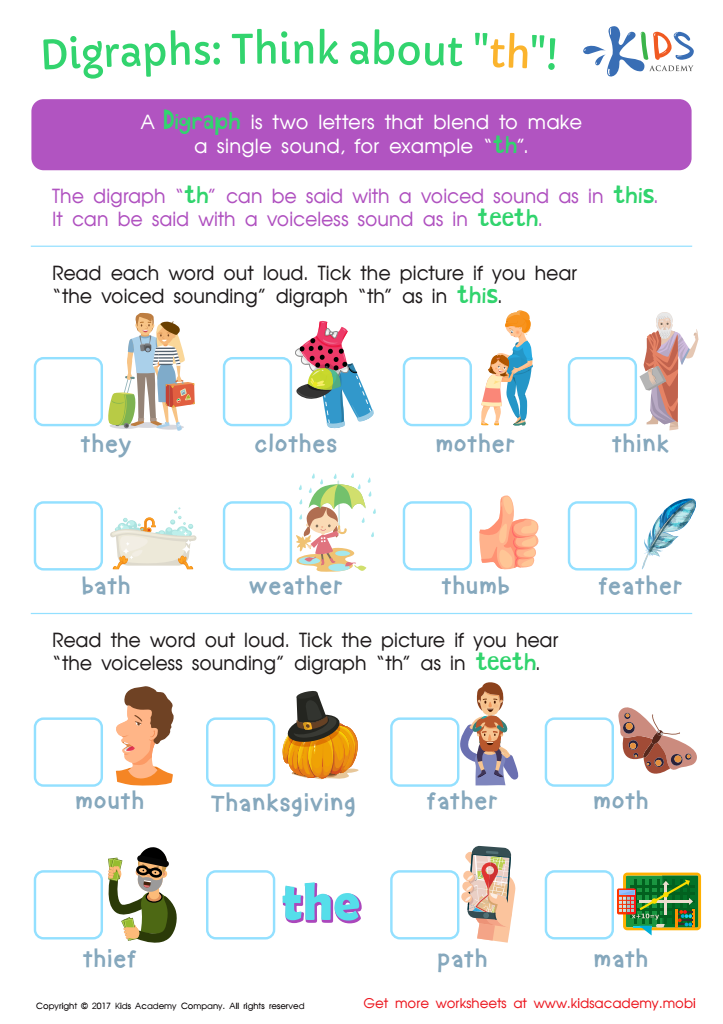

Digraphs: Think About "th" Worksheet


Blending Consonants: "Fl", "Bl" and "Gl" Printable
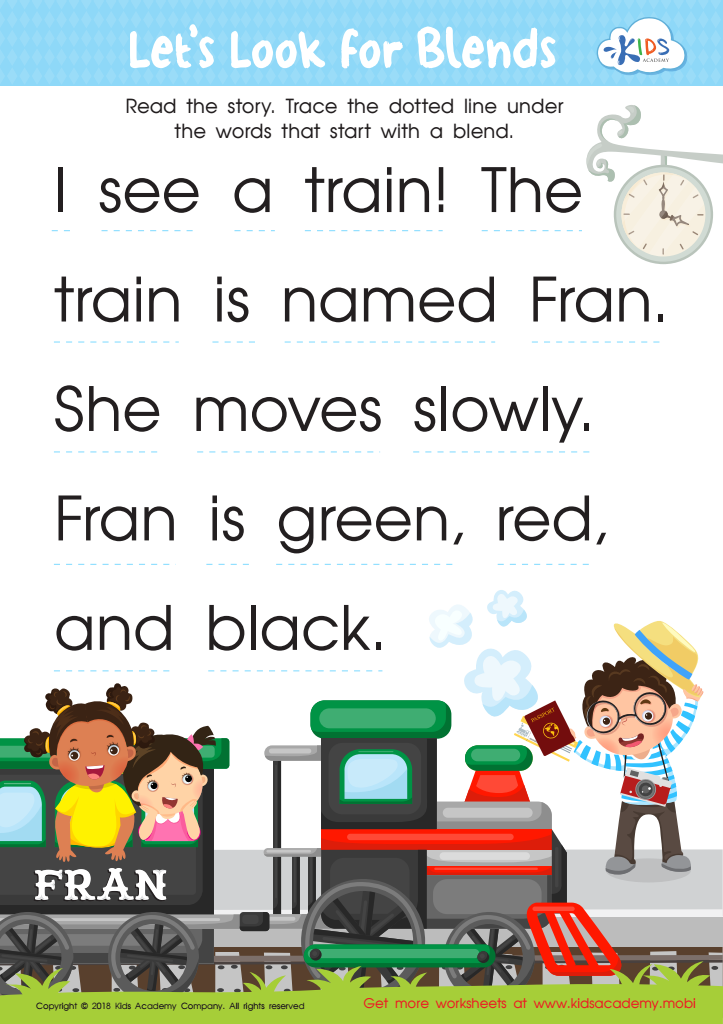

Let's Look for Blends Worksheet


Shhh... What Digraph? Worksheet
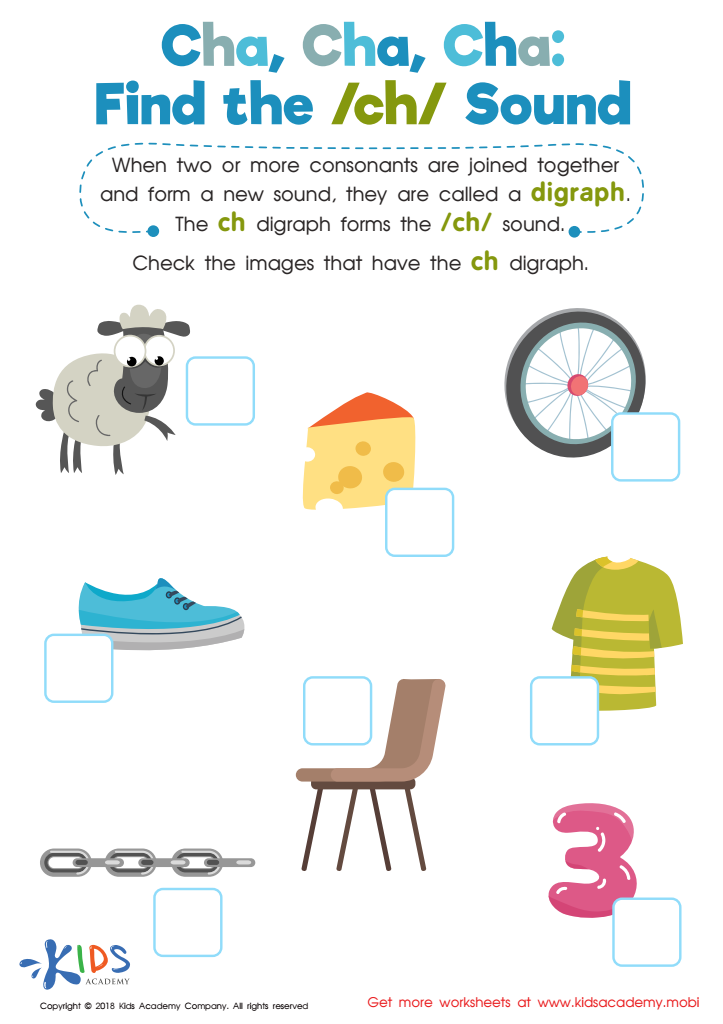

Cha, Cha, Cha: Find the /Ch/ Sound Worksheet
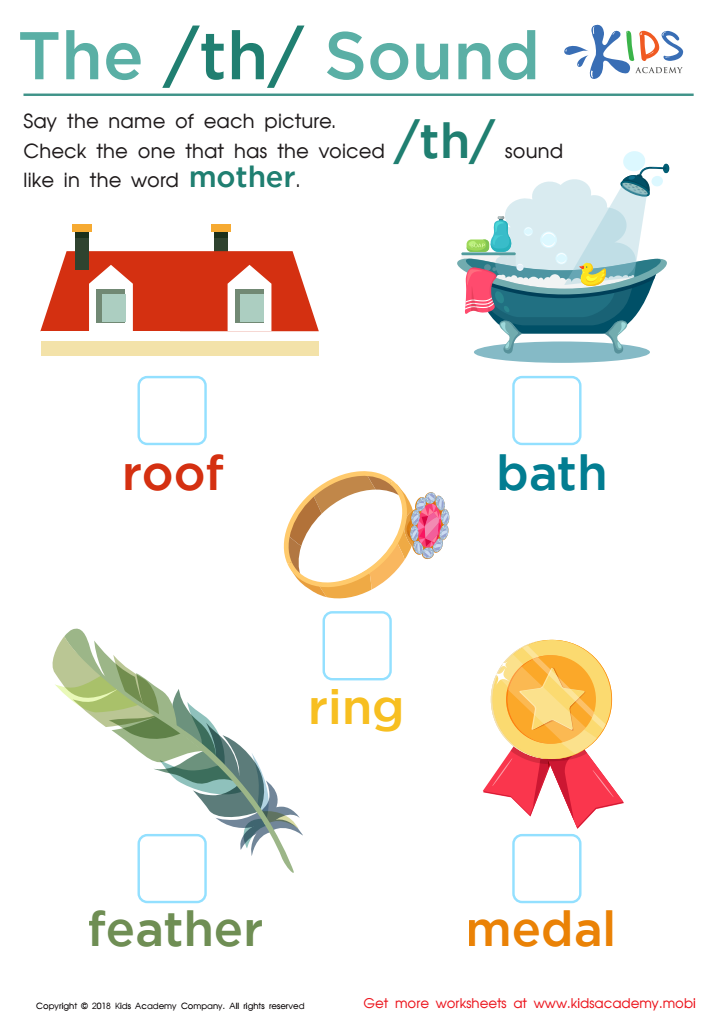

The /th/ Sound Worksheet
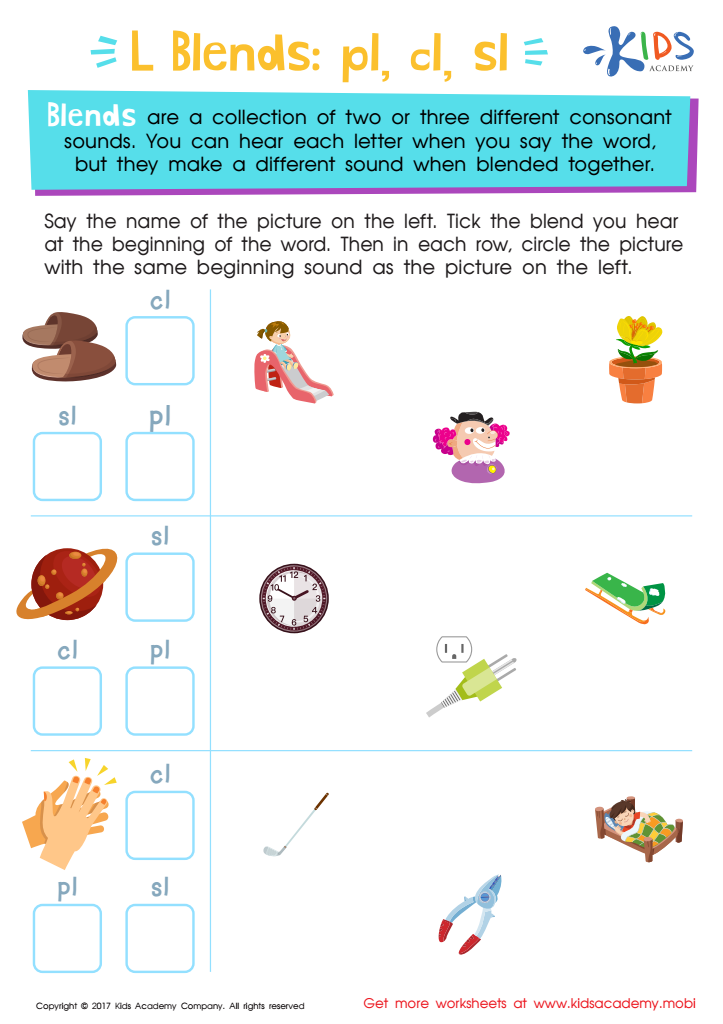

L Blends: "Pl", "Cl" and "Sl" Printable


Where Is the Digraph? Worksheet
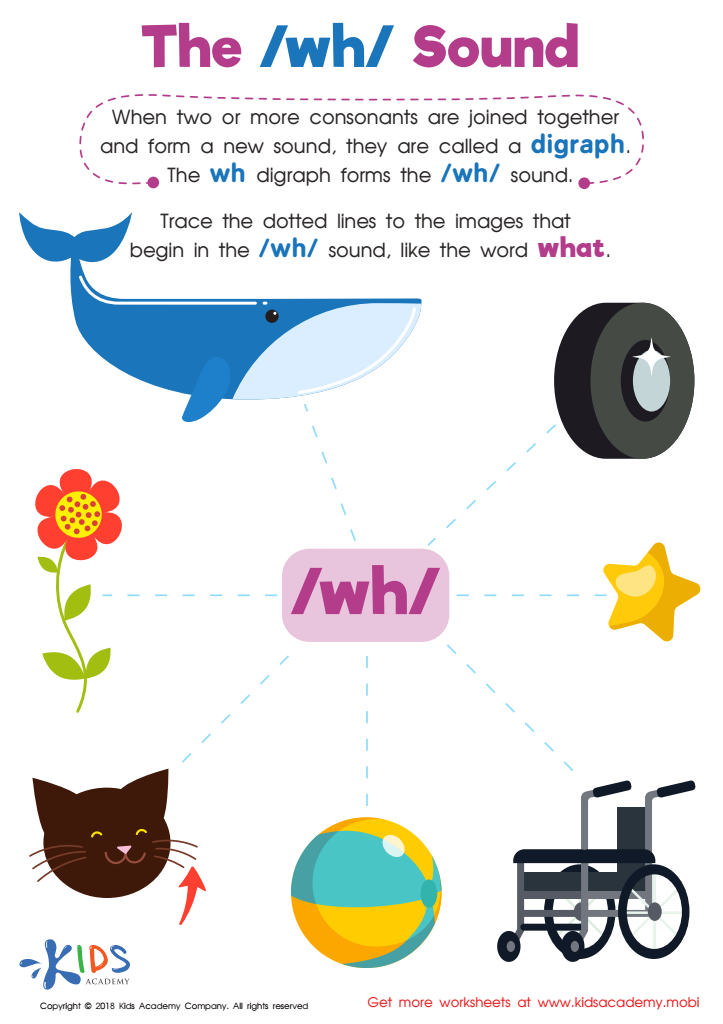

The /wh/ Sound Worksheet
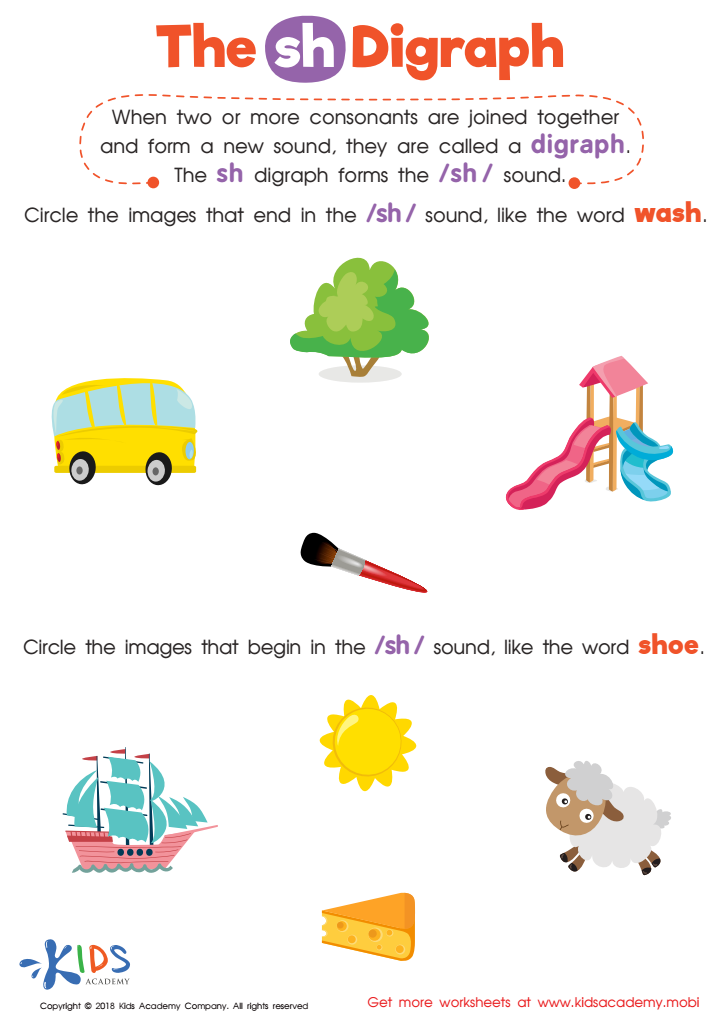

The SH Digraph Worksheet


Missing Digraph: Part 2 Worksheet


Consonant Blends: "Dr" and "Tr" Printable
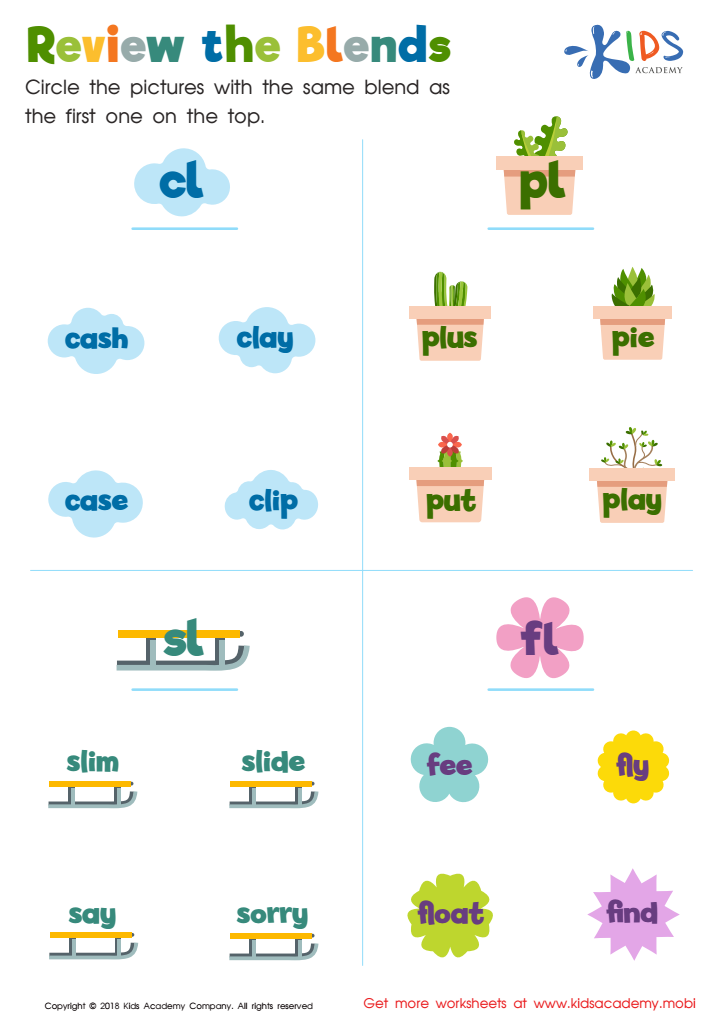

Review the Blends Worksheet
Consonant digraphs are essential building blocks in early literacy development for children aged 6-8. Understanding these combinations—two consonants that together make a single sound, like "sh," "ch," or "th"—is crucial for effective reading and writing. When parents and teachers prioritize consonant digraphs, they equip children with the skills necessary for decoding words, enhancing their overall reading fluency.
Learning consonant digraphs helps children recognize patterns in words, making it easier to tackle unfamiliar words during reading. This recognition fosters a love for reading, as children gain confidence in their abilities and discover that they can understand and enjoy books independently. Additionally, mastering digraphs aids in spelling and writing; it enables students to spell words correctly and express their thoughts more clearly.
Moreover, understanding consonant digraphs supports phonemic awareness, a critical skill for phonics instruction. Engaging with digraphs through fun activities and games encourages a playful approach to learning, capturing children’s attention while reinforcing essential literacy skills. For long-term academic success, fostering a strong foundation in consonant digraphs not only benefits reading and writing but also cultivates a lifelong passion for learning. Ultimately, this focus enriches both home and classroom environments to support children's educational growth.
 Assign to My Students
Assign to My Students

